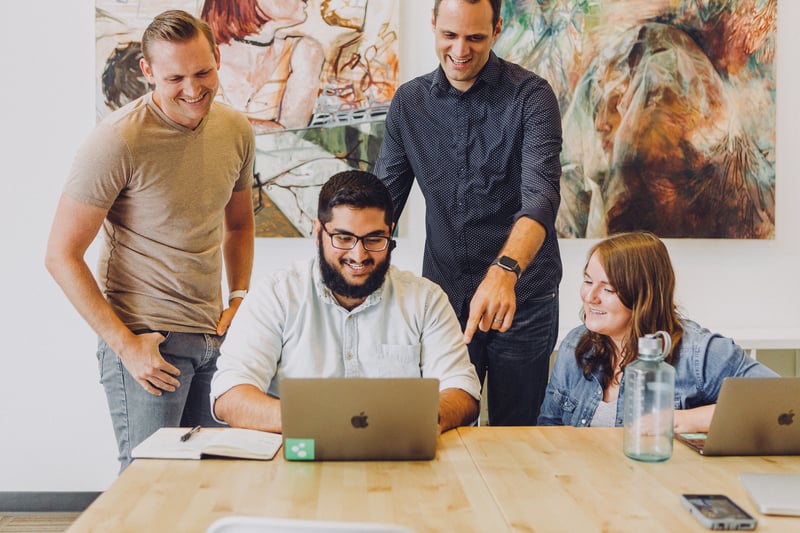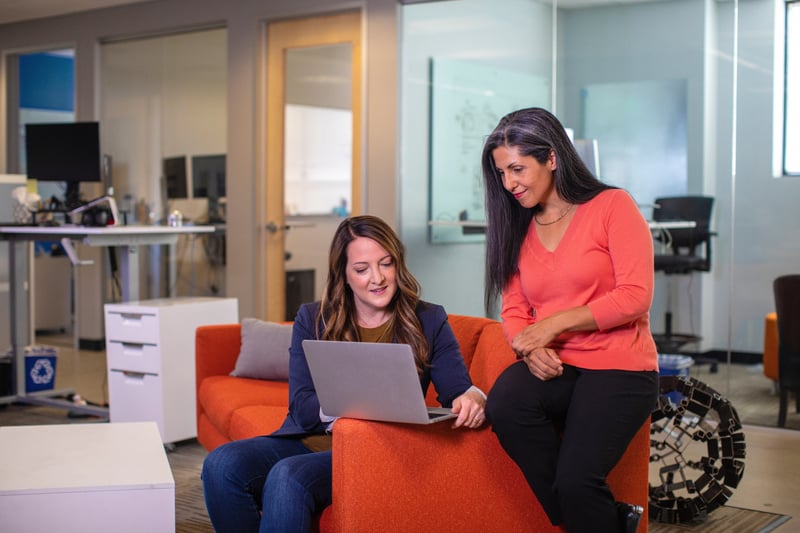Fujitsu: Creating Value for the Customer Through Innovation
Leading Japanese information and communication (ICT) company Fujitsu offers a wide range of technology products, solutions, and services. Approximately 125,000 Fujitsu employees (as of 2022) support customers in more than 100 countries.
Here, we assess how Fujitsu’s European division developed a highly successful approach to co-innovating with their customers, which became a core component of their service delivery offering.
Subscribe to the HYPE Innovation Blog
Challenges before HYPE
No Way To Connect With Customers
In 2013, Fujitsu’s UK and Ireland business began looking into how the company could innovate in partnership with its customers. There was a real desire to connect with customers more easily utilizing Fujitsu’s extensive technology expertise.
Digital Disruption and Increasing Competition
Customer-centric innovation had become particularly important because organizations were feeling the increasing pressure of digital disruption and were looking for major ICT partners like Fujitsu to help them respond quickly and build a culture of co-creation.
The results of a survey Fujitsu carried out in 2013 highlighted growing competition from low-cost providers in regions like India and the threat to the traditional technology industry from new entrants such as Google and Amazon.
The Need for a New Approach to Customer-Centric Innovation
These market dynamics drove Fujitsu’s goal of innovating with customers and prompted the company to launch a project to create a new approach to customer-centric innovation that would be valued by both customers and the marketplace.
Fujitsu had four key requirements for its new approach to innovation. It should:- Be collaborative;
- Connect end customers with Fujitsu experts from around the world and across industries;
- Enable continuous innovation rather than a one-time event;
- Resulting in business value for customers and supporting commercial opportunities for Fujitsu.

The Solution: Customer-Centric Processes Built by and Integrated With HYPE
After experimentation with several customer accounts to find common characteristics of effective co-innovation, Fujitsu developed a unique innovation service for co-creating with customers, based on the principles described above. The service uses an eight-stage cyclical process, hence its branding as “Activ8.”
Fujitsu selected HYPE Enterprise’s platform to support the ideation phases of the process given the platform’s breadth of capabilities and simple-to-use interface as well as the support HYPE offered in using the platform.
Fujitsu launched a pilot of Activ8 in late 2013 focused on a real business challenge. As the pilot proved a success, an investment case was approved for rollout with clients and the Activ8 team grew to eight people. By 2017, Activ8 had become an EMEIA-wide shared service for customer-centric innovation, benefiting a wide array of customers. The service is offered to every Fujitsu customer, which means that multiple engagements are underway on the platform at any one time. The HYPE software therefore acts as a multi-tenanted platform where Fujitsu can co-create with a number of customers, each separately, with private and secure ideation campaigns.
“The process support was a big factor in why we chose HYPE. We weren’t looking for a pure software offering, we were looking for the process support around that, and the experience of enterprise-wide innovation programs. As there was the added complexity of innovating with many other organizations, sometimes in an open innovation style, HYPE’s experience of cross-enterprise innovation was central to us choosing HYPE as a partner.”
- Eleanor Tong, Innovation Adoption Lead, Fujitsu
Strategic goals for Fujitsu’s customer-centric Active8 innovation program:
- Work with account teams and customers to find the right time to begin innovation engagement. Transparency is essential to ensure that both parties have a clear understanding of the co-creation process.
- Look for business challenges that Fujitsu can help to solve, where the outcome creates business value for customers and a commercial benefit to Fujitsu.
- Co-create with customers to generate value on both sides.
- Strengthen Fujitsu’s relationships with its customers.
Early on in the development of Fujitsu’s Activ8 innovation program, it was agreed that success depended on some key elements being in place, as outlined below.

Key Components of Successful Customer-Centric Innovation
- Utilize the principles of design thinking and human-centered design, to help ensure that problem-solving is at the core of the innovation process.
- Develop a core team of innovation specialists to execute innovation projects, undertake stakeholder engagement, and drive up the adoption of the platform, as well as drive the outcomes by implementing the innovation.
- Enable collaboration through the innovation program across a geographically diverse community.
- Provide spaces for people to meet and collaborate face-to-face around a given challenge or range of challenges.
Innovation Framework
The Activ8 approach uses a cyclical framework that enables continuous iteration, with in-built gateways that enable any of the parties involved to back out if the experiment is not working as expected and to reengage at a later date on another challenge.
Co-creation engagement starts with a specific challenge or opportunity faced by Fujitsu’s customer organizations and then focuses on that issue in isolation. An agreement is made about the funding for any outcomes and solutions generated. The HYPE platform is used to create idea campaigns based on the agreed challenges. Fujitsu then builds a unique “crowd,” which connects experts from across the company who can contribute to the challenge. The customer organization is also invited to bring their experts into the online challenge. After the ideation phase, a review process begins, utilizing HYPE’s evaluation workflow to select ideas to be progressed into concepts for prototyping. Based on the success of the prototype, further development can begin or another iteration of the idea cycle can begin with a different or refined challenge.
The Innovation Team
Activ8 comprises a core team of eight employees and a number of trained practitioners who support engagement across the region. The team is responsible for the innovation framework, the online platform provided by HYPE, supporting methods and tools, and an ongoing training program to develop practitioners throughout Fujitsu to use Activ8.
Innovation Platform
Fujitsu uses the HYPE platform a little differently from other organizations. Instead of being focused on R&D or enterprise-wide engagement, the platform is used for idea campaigns for and with customers. As a result, many organizations collaborate with Fujitsu on its HYPE platform.
Evaluating the Benefits of Working With Hype
Senior stakeholders were keen to track how innovation that delivered value to customers also supported sales given the priority of delivering on sales targets within business lines and market-facing units. This therefore became the fundamental metric tracked on the platform, initially with six trailblazer accounts and then more widely across the business.
The comprehensive regime now in place aligns with monthly business reporting. At the top level, the financial metrics fall into two categories:
- Direct sales generated from stand-alone innovation projects.
- Indirect sales are generated where an opportunity arises as a consequence of innovation engagement, or where Activ8’s innovation efforts are part of a bigger opportunity.
At the time of writing, Activ8 had secured a pipeline of over £25 million in direct revenue, realized 10x ROI, and supported opportunities of over £500 million.
“If you consider whether we are doing better since Activ8 was introduced, we can say that at a minimum, we are now able to describe the value – in real monetary terms – of innovation for our service model, which we couldn’t do before. Also as a minimum, we have strengthened the customer relationship. And we can also say that this was one of our differentiators in winning work.”
- Joachim Box, Director of Innovation, Fujitsu
We make software that helps companies connect people with ideas, to drive innovation and transformation forward.

The HYPE Newsletter - Send me updates
Please keep me posted on Hype’s latest new product features and innovation management insights.



